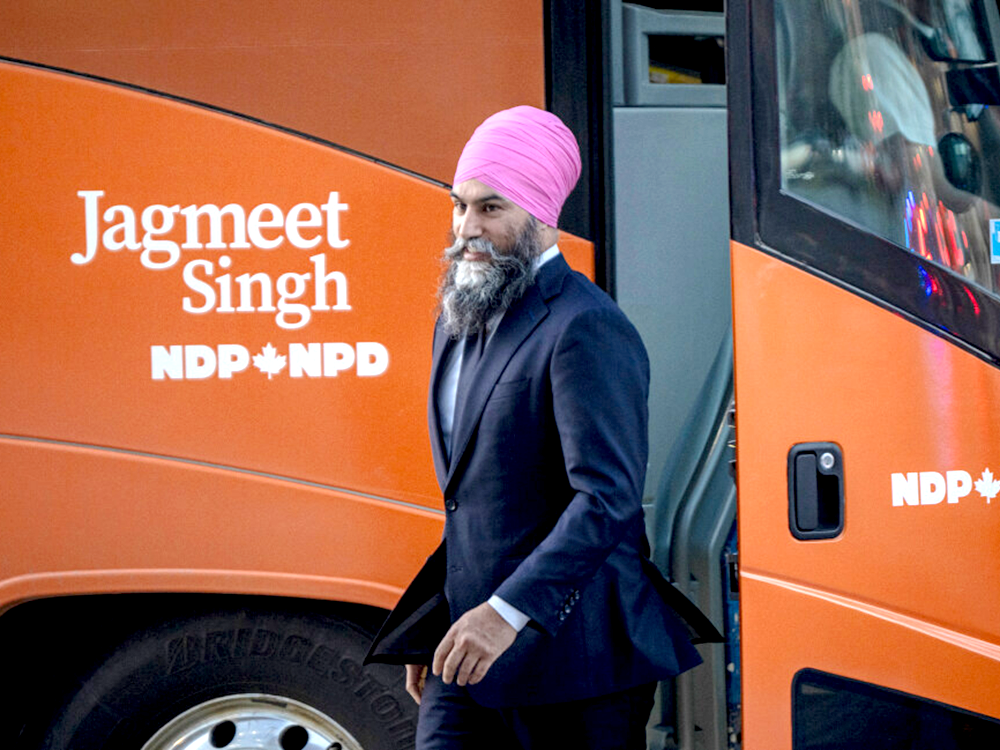
Under
, Canada’s
has successes its leftist supporters can be proud of.
A national dental care program, pharmacare and anti-replacement-worker legislation are all in line with the party’s social democratic vision of governance.
But they came about in a curious way, as the NDP’s policy reward in a tit-for-tat arrangement that kept the governing Liberal party in power well past the end of its popular support.
The supply and confidence deal that gave Liberals control of the parliamentary agenda, supported by NDP votes, did not benefit Singh’s party as much as it could have, political experts say. It dragged on beyond its purpose. It needed a time limit, an earlier exit clause. For the NDP, it looked like all give and no take.
Singh made this deal in 2022 but never fully capitalized on what he had, and now it might be too late, because he has become a “bit player” in this current campaign, said Tamara Small, professor of political science at the University of Guelph, whose research focuses on the use of digital technologies in politics.
“He’s in a tough position,” Small said. “This race is coming down to two parties and there’s really no space for him.”
“Everything I thought about Canadian politics in December is wrong,” Small said. Late last year, when the obvious ballot questions seemed to be the cost of living crisis and a referendum on Justin Trudeau, the NDP potentially had the space to make the argument to progressives that they were the answer to a Conservative surge.
“At that point, (Singh) was in control of the NDP’s destiny. Had Parliament come back, he would have had some control. Now he’s out of control,” Small said. Singh was Trudeau’s third-term kingmaker, but he never got to perform the inevitable regicide.
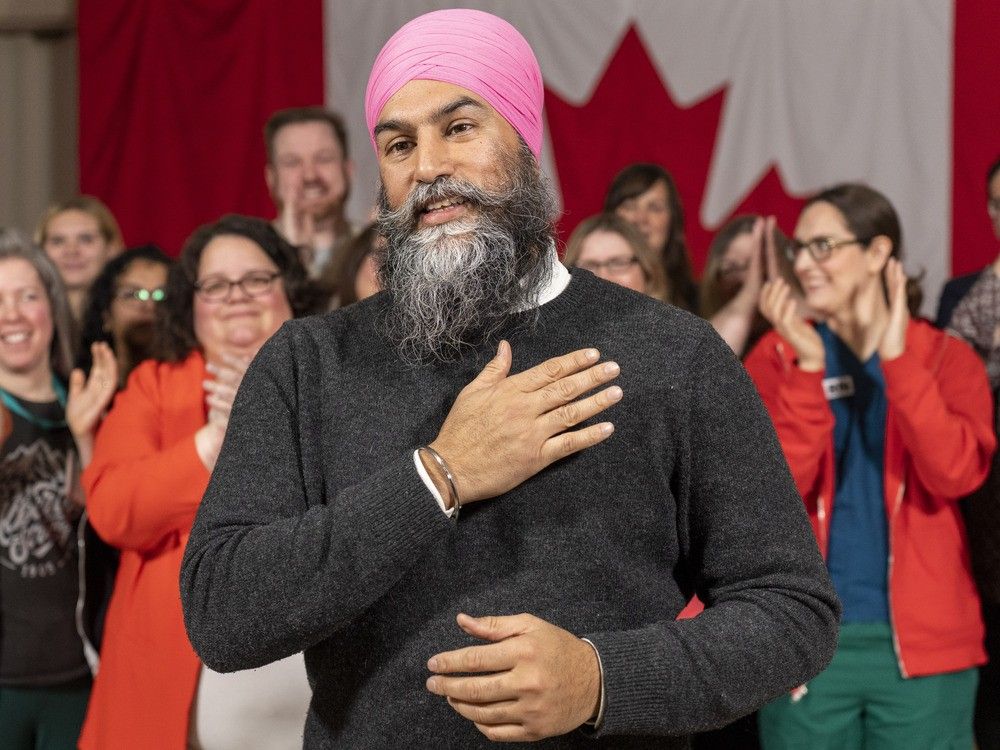
Historically, NDP success is correlated with Conservative success. The Liberals have to tank and their voters flee to either side. Instead, now it looks like the NDP is tanking, boosting the Liberals against the Conservatives.
Singh and his NDP “are locked in this struggle for the working class vote with the Conservatives,” said Jim Farney, professor of political studies at the University of Regina, director of its graduate school for public policy, and a specialist in the politics of Canadian social conservatism. “The mystery of Singh to me as an outsider is that while he has not moved the numbers in a favourable direction his whole time as leader, he does seem to be very popular inside the party.”
Mark Carney, the new prime minister and Liberal leader, took any wind out of Singh’s sails by expanding the federal dental care program just before calling this
, and now the only question that seems to matter is American tariffs and national sovereignty.
“When people think NDP they don’t think foreign relations. They think of health care, dental care,” Small said.
In 15 years, she said, Singh is likely to get retrospective credit from his side for dental care and pharmacare, the kitchen table issues that move his natural voters. But hindsight doesn’t win elections. And Liberals have proven themselves adept both at dodging blame for their own bad ideas and at taking credit for other parties’ good ideas.
“The NDP doing terrible in this election is unlikely to be the fault of Jagmeet Singh,” Small said.
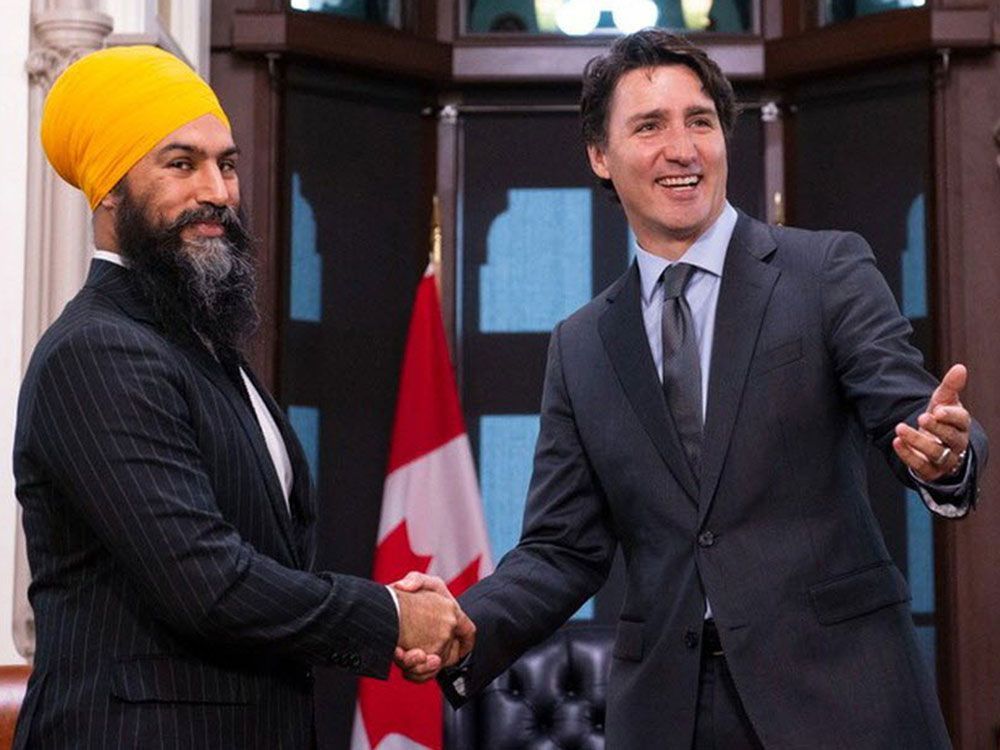
By the time the fateful
supply and confidence deal finally collapsed
, in a church basement in Toronto last September, it all looked pretty sloppy, as if the moment had passed Singh by. He didn’t even actually tear up a printed agreement, which the cameras would have loved.
The federal government had just ordered
striking railway workers back to work
under forced arbitration, which Singh said rewarded railway companies for bad faith bargaining and collusion. If the NDP can’t stand up for unionized blue collar workers against private railroad companies, they might as well not bother with anything else.
It looked like Singh getting dragged before the cameras to admit what everyone could already see. The deal was over. The die was cast. This was a launch party for the campaign Singh wanted to run, and it was over before lunch.
Singh’s finger was on the pulse, as it then was, but only briefly. Polls had him nearly tied with the Liberals. His poster slogan was “Restore Hope.” He said the election he seemed to be triggering would be between the NDP and the Conservatives. He called Justin Trudeau weak and selfish, and Pierre Poilievre a callous sellout to the rich. This is the NDP strike zone, but Singh was swinging late.
“This used to be a country where working hard earned you a good life, where a paycheque from a decent job got you a home that fit your family and a fridge full of groceries,” Singh said. “There is a battle ahead of us, the fight for the Canada of our dreams, the fight against Pierre Poilievre and his callous agenda of Conservative cuts, the fight to restore hope, and the promise that working hard gets you a good life. I’m ready for the fight.”
We’re coming to a community near you 🚌🍊
I’m beyond excited to be travelling across Canada to connect with working people on issues like health care, housing and affordability and deliver our message of hope.
See our bus on the road? Text my public number at 613-801-8210 pic.twitter.com/pCGHuhMTsq
— Jagmeet Singh (@theJagmeetSingh) March 21, 2025
Today, with the fight in full swing, his campaigning has been an effort to get noticed in a campaign dominated by a new foreign economic threat, which does not play well as a natural NDP campaign focus.
On domestic issues like the cost of living crisis, Singh has proposed measures such as emergency price caps on staple groceries, removing GST on some essential items, and low interest mortgage loans for first time home buyers. He has vowed to block American ownership of Canadian health-care assets as part of a broader opposition to increased privatization of medicine.
And then there are the slightly more loopy ideas, such as cancelling the contract with the United States for F-35 fighter jets and building our own fighter jets in Canada, which had a whiff of not only implausibility, but of attention-seeking desperation.
Jagmeet Singh, 46, lived as a child in Toronto’s suburb of Scarborough, in Grand Falls-Windsor and St. John’s in Newfoundland, and in Windsor, Ont. He studied undergraduate biology at Western University and then law at Osgoode Hall, then worked as a criminal defence lawyer in Toronto before entering politics. He ran federally for the NDP in Ontario and narrowly lost in the 2011 election, then won the provincial riding of Bramalea-Gore-Malton barely five months later. He won leadership of the federal NDP in 2017, and has held the British Columbia riding of Burnaby South since 2019. He is married to Gurkiran Kaur Sidhu, with whom he has two young daughters.
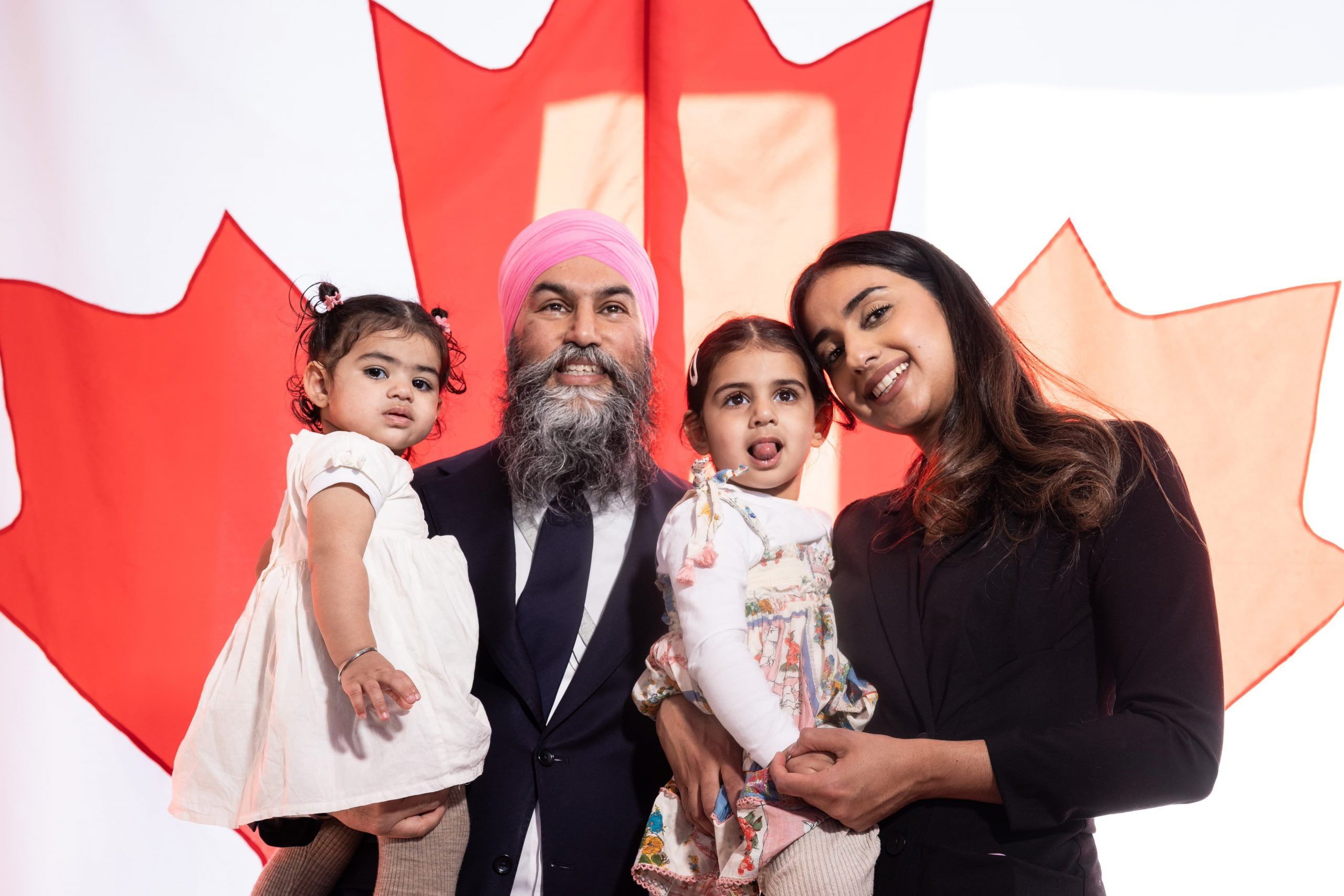
His hard-left politics aside, people tend to like him personally. They often warm to him. He campaigns well and has high likeability polling.
In the 2019 election campaign, Singh’s first, his reaction to Justin Trudeau’s blackface scandal was a striking moment that revealed a depth of character the public had not yet seen. This was a difficult issue to manage for the only leader of an ethnic minority. The risk was real that Trudeau would use him as a foil for a public apology. Singh could have campaigned on it, but instead he set a higher tone with an impassioned defence of sensitivity to young Canadian men and boys who were recognizing the sting of frat boy racism on display by their own prime minister.
In a video shot in a hotel room the same night the news broke, Singh said he himself had known this sting, and as a young person he threw a few punches, but he urged a higher road.
“You might feel like giving up on Canada. You might feel like giving up on yourselves,” Singh said. “I want you to know that you have value, you have worth, and you are loved.”
People also like to see him fight, metaphorically, but also sometimes with the hint of a literal threat.
His confrontation last year on Parliament Hill
who called him a “corrupted bastard” for not bringing down the Liberal government was quite a sight. Singh turned around. “You got something to say?” he demanded of the man who appeared to have said it, who was filming on his phone. There was no more trash talking. Things got cordial real quick. The man denied saying anything: “I didn’t say nothing. It wasn’t me. It was the gentleman behind me I guess.”
No wonder. Singh has an imposing physical presence and practices the martial art of Brazilian jiu-jitsu. A police officer stood by as if he recognized Singh could take care of himself. But he just called the guy a “coward,” turned on his heel, and won the round.
Singh’s likeability has kept him alive politically. He’s charismatic and personable, with a compelling stage presence, said Elizabeth Goodyear-Grant, professor of political studies at Queen’s University and director of the Canadian Opinion Research Archive.
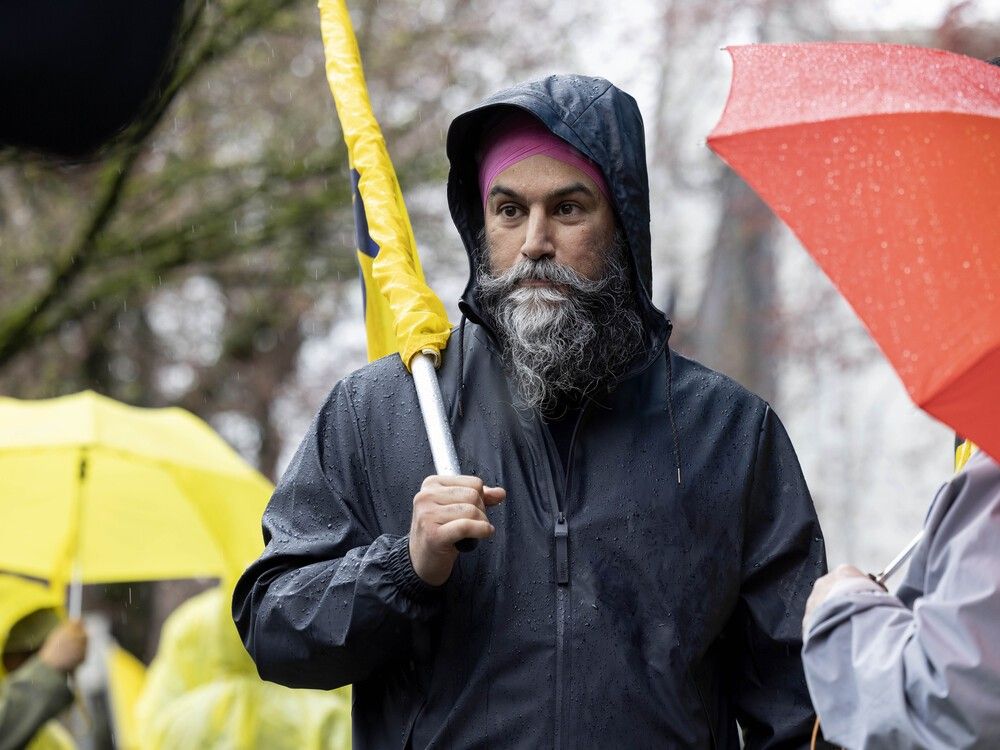
He can present as an idealist among cynics. But one problem with being in political opposition is that opportunities for advancement don’t come along every day. It’s hard to make them, and you cannot waste them like Singh has.
When Singh became NDP leader in 2017, the party was on the slide. They had reached a historic high under Jack Layton in 2011, taking Official Opposition status from the decimated Liberal Party under Michael Ignatieff. Layton’s successor Thomas Mulcair dropped more than half those seats when the Liberals took their majority in 2015.
(Mulcair has re-emerged in this campaign as a media pundit who
described his own party as an “afterthought”
and said this was an election between two parties, which is arguably true but probably hasn’t helped the communal cause.)
In Singh’s first election as leader in 2019,
. Almost half the party’s remaining seats were lost. In the next one, 2021, there was a new opportunity to boost the seat count, with Singh’s familiar face making a credible pitch against a tired government. He had the highest favourability rating of all the party leaders. But he knew this was not the right time for the NDP, and he argued against holding the election at all, and even asked Governor General Mary Simon to block it. In the end, the NDP gained a single seat.
“Now they’ve cratered,” said Goodyear-Grant, and they’re struggling to get noticed in the third election in a little more than five years. “There’s no scenario in which the leader stays on.”
One major failure for Singh, she said, is that he never landed with Quebec voters, despite the ideological and policy synergies that previous NDP campaigns have targeted.
Last fall, there was a theory making the rounds in conservative circles that Singh was prolonging the supply and confidence deal simply to become eligible for his
. Goodyear-Grant calls this silly. It trivializes the more charitable explanation that he did not wish to go to the polls with the looming spectre of a Conservative landslide. But things change.
In the pantheon of Canadian social democratic federal politicians, Singh today occupies a plinth somewhere between Alexa McDonough and Ed Broadbent. He’s no Jack Layton, who reached the party’s highest high, but nor is he Audrey McLaughlin, who reached the lowest low. So far, anyway. And even if the NDP is wiped out, Goodyear-Grant said, Singh has “every ability to be financially secure post politics.”
Even Tom Mulcair has a steady paycheque today.
So for Singh, this current election is do or die, but with even his own seat in peril according to polls, it’s looking like he probably won’t.